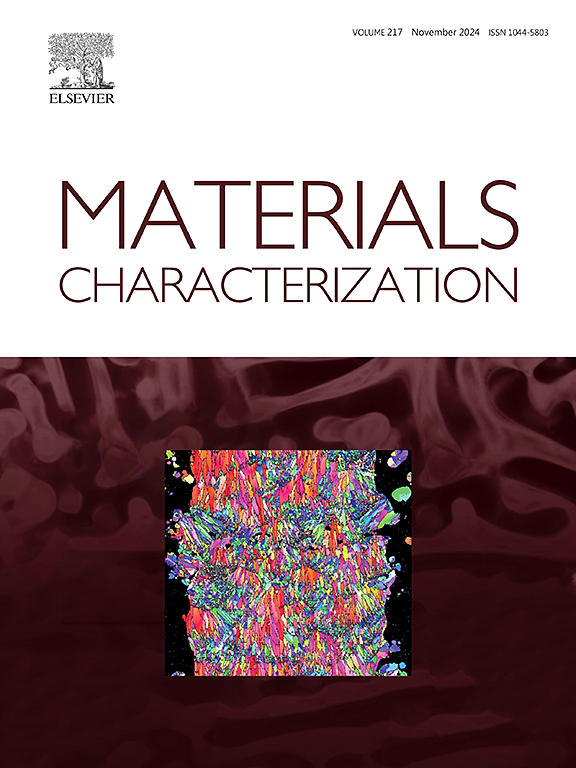Revealing the formation mechanisms of twinned substructure in low-carbon martensitic steel through multiscale characterization
IF 4.8
2区 材料科学
Q1 MATERIALS SCIENCE, CHARACTERIZATION & TESTING
引用次数: 0
Abstract
The formation mechanisms of twinned substructure in low-carbon martensitic steel were systematically investigated through a synergistic analysis of spatial distribution, atomic arrangement, localized strain, and elemental segregation. The findings show that heterogeneous carbon distribution creates favorable conditions for twinning deformation. Twinned substructure preferentially nucleates in carbon-enriched depressed areas, demonstrating substantial spatial heterogeneity in both individual dimension and population distribution. In this substructure, irregular area disrupts the regular crystallographic arrangement between the matrix and twin. The width of this area varies from atomic scale (at twin boundary) to nanometer scale (within matrix/twin interior), depending on the matrix/twin dimensions. The irregular area has a hexagonal configuration and maintain a coherent relationship with the adjacent matrix/twin phase. This structural characteristic enhances carbon diffusivity, accommodates localized strain, and reduces transformation resistance, which together promote the formation of twinned substructure. Carbon concentration disparities critically regulate twin morphology and microscopic configuration. As the carbon content increases, the width of the irregular area decreases, and its preferential location shifts from matrix/twin interior to twin boundary. The identified mechanisms exhibit strong generalizability across carbon concentrations and are expected to establish a unified mechanistic framework for the formation of twinned substructure across the full carbon content spectrum.
求助全文
约1分钟内获得全文
求助全文
来源期刊

Materials Characterization
工程技术-材料科学:表征与测试
CiteScore
7.60
自引率
8.50%
发文量
746
审稿时长
36 days
期刊介绍:
Materials Characterization features original articles and state-of-the-art reviews on theoretical and practical aspects of the structure and behaviour of materials.
The Journal focuses on all characterization techniques, including all forms of microscopy (light, electron, acoustic, etc.,) and analysis (especially microanalysis and surface analytical techniques). Developments in both this wide range of techniques and their application to the quantification of the microstructure of materials are essential facets of the Journal.
The Journal provides the Materials Scientist/Engineer with up-to-date information on many types of materials with an underlying theme of explaining the behavior of materials using novel approaches. Materials covered by the journal include:
Metals & Alloys
Ceramics
Nanomaterials
Biomedical materials
Optical materials
Composites
Natural Materials.
 求助内容:
求助内容: 应助结果提醒方式:
应助结果提醒方式:


